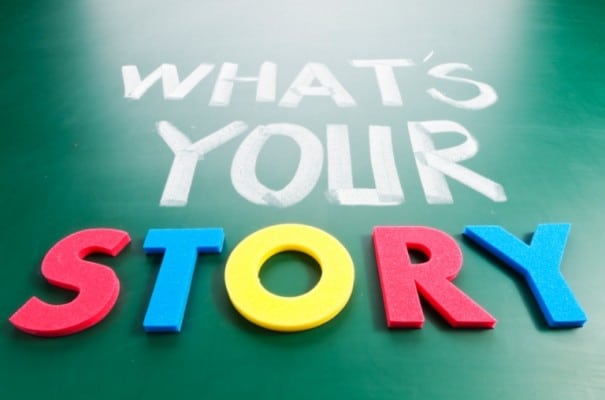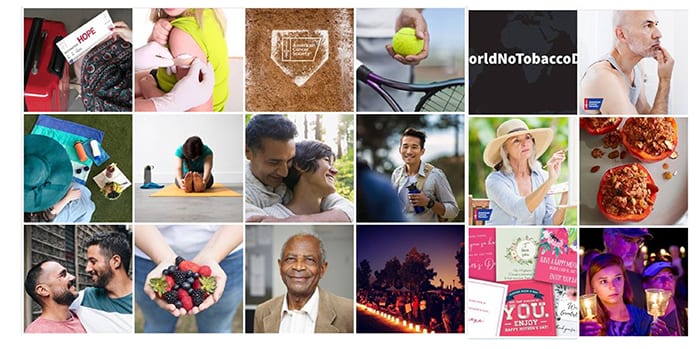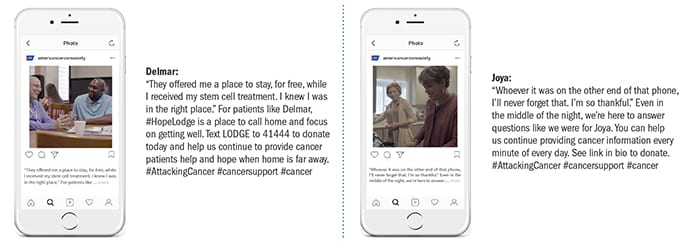
With the New Year upon us, countless brands will be looking to begin afresh, rolling out new products or re-launching existing products and brands. This means communicators will be asked to create campaigns designed to break through society’s din and grab consumers’ attention, not to mention siphon their cash and credit cards.
We asked communicators how best to launch products or to re-brand on social. We’ll start with a well-known nonprofit, the American Cancer Society (ACS), which was looking to re-launch its brand architecture.

Director, Social Media Marketing
American Cancer Society
For Tina Starkey, director, social media marketing, cutting through the clutter was only part of the mission. “We have no physical product” to sell, she says. The goal of raising awareness at ACS is eventually to elicit donations. Another issue for her: “Nonprofits are forgettable...people confuse us with other cancer organizations,” she says.
To begin the cross-functional effort, ACS conducted qualitative and quantitative research, including focus groups, informational interviews and surveys. The investment was “sizeable.”
The research showed people were unsure about what ACS does, “though they gave us credit for [conducting cancer] research.” In fact, ACS does far more than that, though nothing on it posted on social seemed to present a unified message about its various efforts [see photos below].
To some, ACS was “a stodgy, old, white guy in the corner telling you not to smoke,” which was “detrimental” to getting donations, Starkey says.
A key research insight was that cancer overwhelms people. As one consumer told researchers, “Cancer hits you on all sides.” These types of insights led to the brand positioning that was unveiled in Sept. 2017: “Attacking Cancer from Every Angle.”

Source: American Cancer Society
Aiming to Inspire
“We wanted the brand to seem bright and inspiring...targeting people who believe big goals can be achieved,” Starkey says.
An integrated effort, the social side emphasized the five-icon logo that showed the various angles ACS is attacking cancer, including research, advocacy, providing rides to/from treatment, offering services to those recently diagnosed and giving patients a place to live when treatment is far from their home.
In short, “We’re research, but we’re so much more,” Starkey says, noting healthcare brands tend to specialize; ACS wanted to tell its audience that it does many things.
This thinking tracks with one of the goals of the social portion of the campaign, which is to not just ask for money, but to show the organization’s values and how ACS is using donors’ dollars to attack cancer.
Leading with Storytelling
Starkey and her team did this via an emphasis on storytelling, which they thought would be a great way to show donors how their money is being used.
As such, the plan was to engage in social listening and gather user-generated content (UGC) for Instagram, Facebook and Twitter.
Stories were chosen that emphasize one of the five pillars. A story on ACS’s Twitter page deals with a place to stay during treatment [see graphic], another with rides to/from treatment and a third discusses counseling services offered to patients.

Data-Based Choices
Choosing UGC material was deliberate, Starkey says. UGC is “authentic and personal” so the stories feel “real,” she says. She also emphasizes the use of data to choose UGC material. “We made choices based on data...we relied on data.”
In addition her team used the latest social platform features, such as 360-degree photos on Facebook and albums on Instagram. Language was consistent across channels and there was a standardization around visual elements, she says.
Some of the KPIs the social team used included Engagement Rate and Estimated Ad Recall. The main KPI for the overall effort, though, was not part of the social effort. That KPI “was dollars...did we receive more in donations after we changed the way we spoke about brand?” Social is an awareness channel for ACS, not a conversion channel, Starkey notes. The results were strong and ACS is “staying the course” with the campaign in 2019.
Creating an Experience
For UPPAbaby, a maker of juvenile products such as carseats and strollers, launching a product is similar to the American Cancer Society’s approach to its brand re-launch.
Similar to ACS, UPPAbaby’s launch efforts are integrated and include traditional and social media and grassroots marketing, says Sarah Hines, the brand’s PR & communications director.
The launching a compact stroller last spring included creating social content as well as arranging product placements on TV and in films, exhibiting at events and targeting influencers.
Similar to the ACS effort, it also began with a look at the target audience. Some of the questions UPPAbaby asked before formulating its social campaign included: Who is our demo on social? How does it consume information? Whom does it listen to? How does it like to engage and when? And what tactics does our competition use?
What struck us about UPPAbaby’s approach was its interest in always creating value and being a resource, both in its content (periodically it answers questions about travelling with infants, for example) and for its influencers; the brand aims to provide value to influencers by sending them useful products when they need them, Hines says. For example, sending a stroller to an influencer who’s a new parent could lead to the influencer using the product and producing an authentic endorsement.
Another interesting aspect of UPPAbaby’s approach is its desire to create experiences, again for both its followers and influencers. An example was a series of influencer events last year held at restaurants. Each course of the meal was related to an aspect of the new stroller, Hines says. One course was “compact,” another was “lightweight.” Napkins were made from the same material as the stroller’s canvas. “It’s a way to think outside the box and create a memorable event and experience” for influencers, Hines says. Some influencers, she says, are bombarded with products and attend myriad events.
CONTACT: tina.starkey@cancer.org sarah@uppababy.com
2018's Top Product Launches
Pulling together a list of top product launches can be tricky. Do you base your list on sales figures only? How about ranking launches according to the brand awareness and buzz they created? Or how many new followers they attracted to social media? We plan to do that in future issues. For this edition, though, we’ve picked noteworthy 2018 launches based on pre-launch hype. Drop us a line with your comments and nominations.
Facebook’s Oculus Go ($199): Finally a reliable, stand-alone VR apparatus from Oculus, at least that was the hype when this device launched in early May. Based on sales figures through late Nov., the hype was warranted.
eBay’s Headgaze: Who says interns don’t do anything? eBay interns developed software that allows users, particularly those with motor impairments, to access their mobile phones via head movements.
Apple’s Homepod ($349): “Alexa, are you afraid of Homepod?” A fair question since Homepod, billed as a top-flight, voice-activated speaker, handles many things Amazon’s Alexa Echo does, such as checking weather and creating lists.
Amazon Echo Look ($199): Armed with a camera for full-length stills and video, it helps users dress more fashionably.
RED Smartphone ($1295): This phone put RED on the map, at least with consumers. The phone’s differentiator is a holographic screen that allows viewers to watch and shoot videos in what RED calls 4-D.
Plume Labs Flow ($179): What parts of your city or town contain the most harmful air? You’ll get answers with this personal pollution detector that works with your mobile phone.
Apple Watch Series 4 ($399): Talk about hype…for a few days in September, after the product’s launch, social and traditional media seemed obsessed with this watch’s ability to take an EKG reading and alert authorities should you fall.
23andMe Genetic Test for Cancer ($139): This launch was another example of tremendous hype that’s resulted in strong sales. In 2018 the company became the first permitted to use genetics to offer cancer-risk data to consumers.
Source: Media Reports
